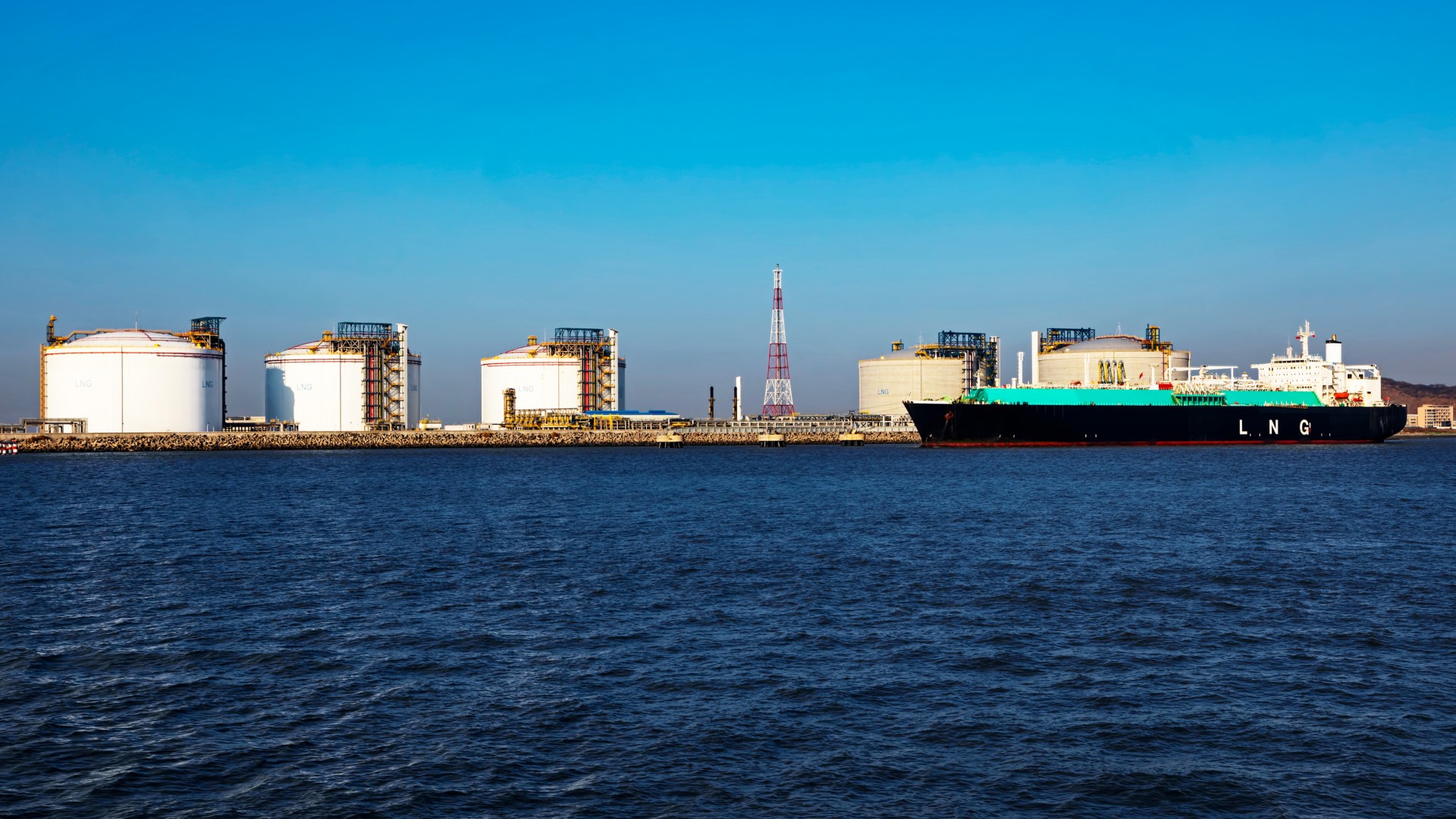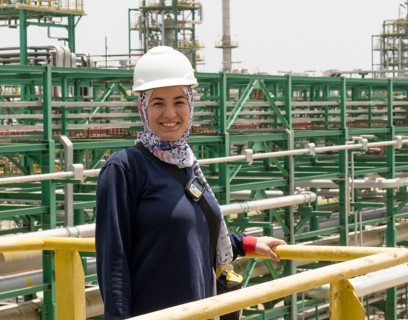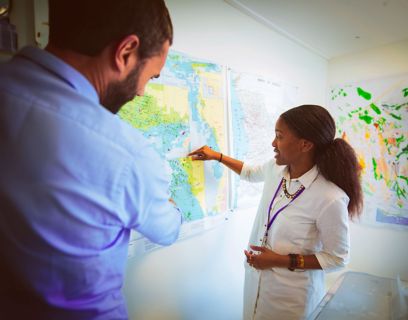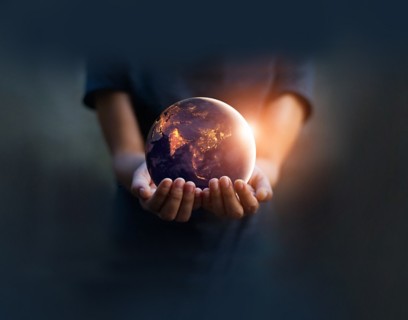- ACCESSIBLE ENERGY
- NET ZERO

MyEni Login

New technologies developed for the production, liquefaction, transportation, regasification and marketing of natural gas have given an innovative input to the global gas market.
Once extracted, the natural gas undergoes treatment to remove water, nitrogen, carbon dioxide and other impurities. It is then pumped through underground or underwater pipelines to liquefaction terminals. These are traditionally located on the seashore, near docks for transport by ship, but the first fully FLNG floating plants for the purification, processing and storage of liquefied natural gas are already in production.
The natural gas liquefaction regasification infrastructure


Liquefaction and storage
Liquefaction is the first key process: the gas is progressively cooled down to below -161.4 °C, at which point the gas undergoes a change of physical state and transforms into liquid form. This allows as much as 620-630 m3 of natural gas to be compacted into a single cubic metre. This change of state takes place in liquefaction plants that include sections for the pre-cooling, extraction and fractionation of heavy component residues. Once liquefied, the gas is stored in large tanks with an efficient thermal insulation system that allows the stored gas to be kept below its evaporation temperature indefinitely.
The storage is the process of storing natural gas in liquid form, at a temperature ranging from approximately -160°C at one atmosphere, to -110°C at 20 atmospheres. By reducing the volume of gas, it becomes easier to transport and store it.
The tanks used are insulated and keep the LNG at its liquefaction temperature. They can have different sizes and capacities according to different storage needs. Spherical cryogenic tanks are more cost-effective and as large as possible because they minimise the heat exchange surface area in relation to the volume of the tank itself.
The LNG is then pumped aboard special LNG carriers equipped with similar tanks and cryogenic systems to maintain the necessary thermal insulation throughout the subsequent journey.
Regasification
Once the LNG carrier has arrived at its destination, the gas which is still liquefied, is transferred from the ship to a storage tank inside the rigasifier, where it maintains the same physical conditions as during transportation. The latter, the second key element of the technology, is an industrial plant that allows the product to be returned from the liquid state used during transportation at sea to the gaseous state useful for transportation over land and final consumption. Regasification plants can be built on land (on onshore structures), or on the high seas (offshore), or on special floating terminals anchored to the seabed known as 'Floating Storage and Regasification Units' (FSRU), such as the Tuscany Offshore LNG plant off Livorno, which was activated in 2013, or Golar Tundra, which recently docked at the port of Piombino near Livorno.
There are also real artificial islands (GBS, Gravity Based Structure), such as the Adriatic LNG Terminal off Porto Viro in the province of Rovigo, which has been active since 2009).
Onshore plants are normally built at port facilities in order to benefit from the necessary technical and logistical support. For safety reasons, they are often excluded from the harbour basin, and are located on jetties in the open sea. In Italy, the first structure of this kind which was designed and built in the late 1960s and has been active since the early 1970s, is located in Panigaglia in the province of La Spezia.
Inside the regasifier, the LNG is sent to a vaporiser which by raising its temperature, causes a reverse state change as the gas expands and returns to its natural physical state. The temperature change usually occurs through heat exchange in tube bundles between liquid gas and seawater, which gives up its heat to the gas; the pressure, on the other hand, is reduced through the expansion of the gas in special tanks. At this point, the gas can be fed into the national distribution network.
Regasifiers can be combined with plants using low temperatures (e.g. food freezing plants), thus recycling cooling energy with obvious energy savings. Furthermore, cold water leaving a regasifier can be exploited as a cold source in an energy production plant that exploits the thermodynamic gradient with respect to the temperature of the surrounding water. In Italy, the Department of Energy and Environmental Research at the University of Palermo is studying these possible applications.
The author: Luca Longo
An industrial chemist specialising in theoretical chemistry. He was a researcher for 30 years before moving into science communication at Eni.
Natural gas in Eni's strategy
Thanks to its flexibility and accessibility, gas is a significant aid in the decarbonization process.
Read more about the LNG breakthrough
Eni.com is a digitally designed platform that offers an immediate overview of Eni's activities. It addresses everyone, recounting in a transparent and accessible way the values, commitment and perspectives of a global technology company for the energy transition.
Discover our mission



















